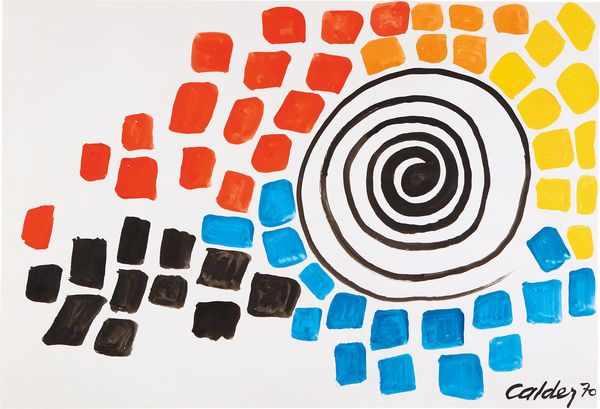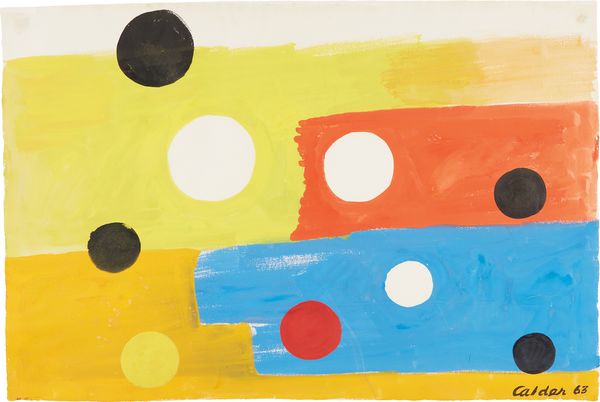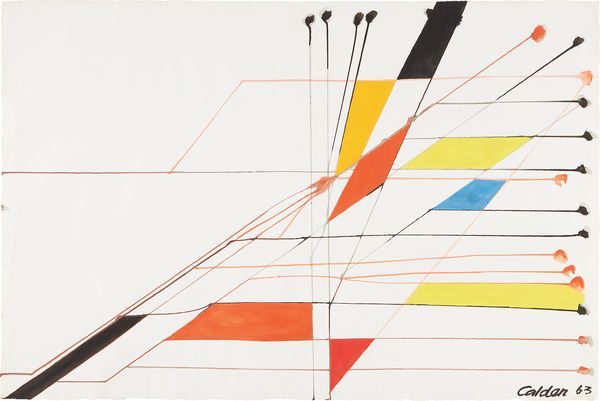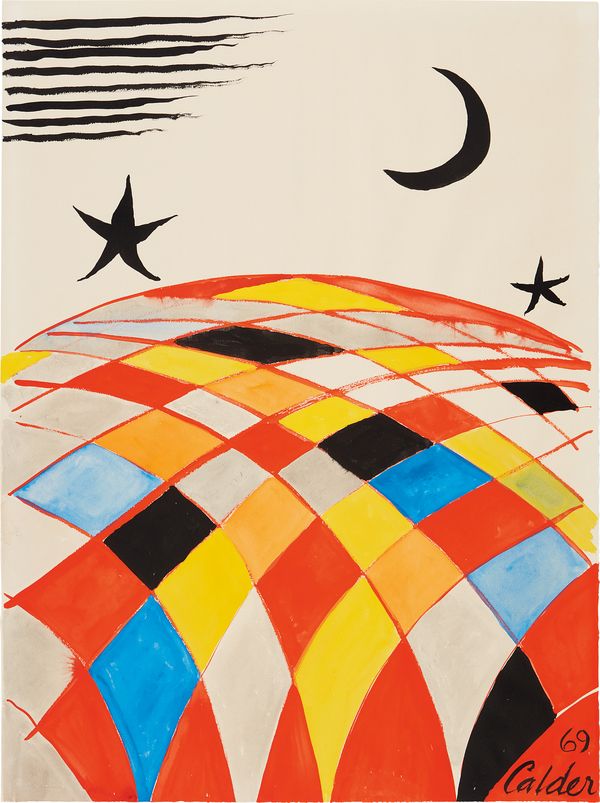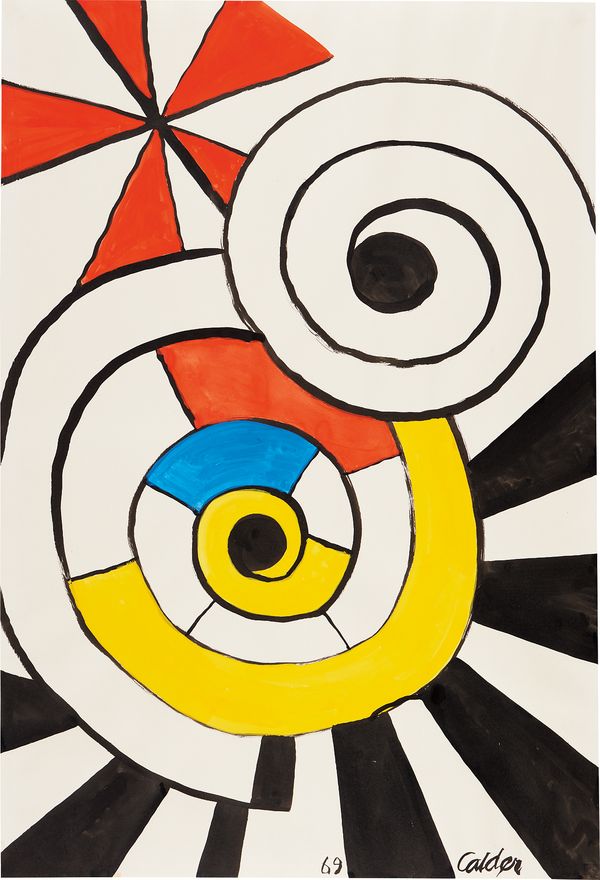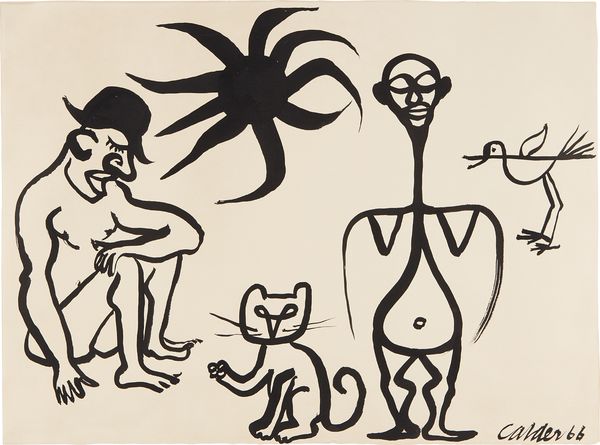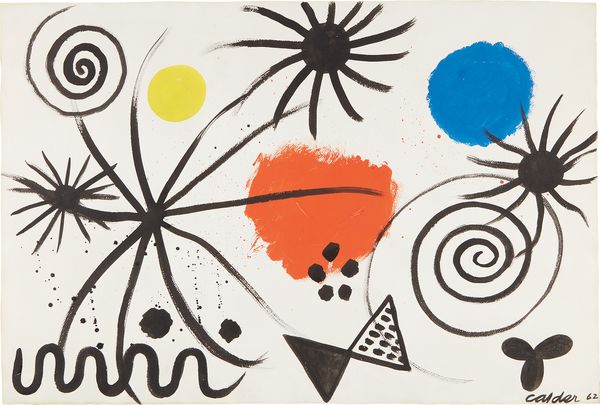Alexander Calder Untitled, 1970
Revolutionizing the notion of "drawing in space," Alexander Calder is widely recognized for pushing the boundaries of modern sculpture. Born in 1889, the American artist radically redefined traditional sculpture in the early 1930s with his invention of the mobile, a kinetic sculpture constructed of flat, abstract shapes.
What I produce is not precisely what I have in mind—but a sort of sketch, a man-made approximation. That others grasp what I have in mind seems unessential...as long as they have something else in theirs.
— Alexander Calder
Alexander Calder Untitled, 1963
In the last decades of his life, Calder also extensively pursued gouache painting and drawing in tandem with his sculptural practice. Expanding upon his early work in illustration, brush drawing and painting, but also expanding upon the core tenets of his sculptural work, he created his first series of gouache paintings during his yearlong stay in Aix-en-Provence in 1953.
Alexander Calder Untitled, 1963
The striking gouache drawings in our upcoming 20th Century & Contemporary Art Day Sale pull the viewer in with their luminous color palettes and palpable dynamism and immediacy. Covering the page with quick and assured brushstrokes, Calder transcribes his sculptural vocabulary onto paper — synthesizing the abstract geometric forms of his sculptures with representational, yet enigmatic and symbolic, motifs.
The spiraling vortices of his early wire sculptures reappear in a number of works, such as Overlapping Spirals, 1969, while references to solar systems, including half-moons, stars and orbs, pervade works such as Map Mondo, 1969.
Alexander Calder Map Mondo, 1969
Alexander Calder Overlapping Spirals, 1969
Other works, such as Untitled, 1966, evoke his works of wire animals and caricature portraits from the mid-to-late 1920s. Untitled, 1962, moreover demonstrates the influence of Joan Miró, Calder's lifelong friend.
I often wish I'd been a fauve in 1905.
Alexander Calder Untitled, 1966
Alexander Calder Untitled, 1962
Rendered in Calder's signature restricted palette of black, white, and bright primary colors, these works, in particular, illustrate the artist's love for the vivid colors. As he once stated, "I want things to be differentiated [within my work]. Black and white are first—then red is next...It's really just for differentiation, but I love red so much that I almost want to paint everything red. I often wish I'd been a fauve in 1905."
Browse the full group of nine works in our 20th Century & Contemporary Art Day Sale before they come to auction on 15 November in New York.
